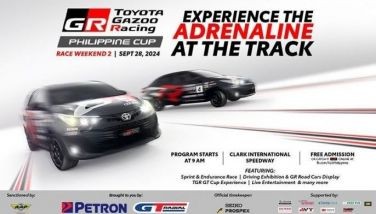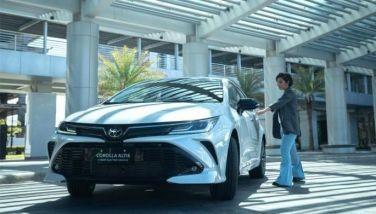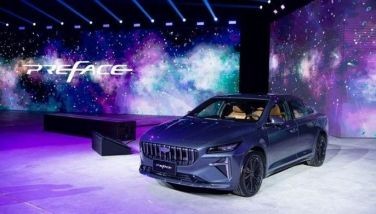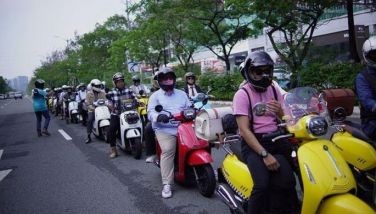Ford shows us how to throw a Fiesta
PHUKET, THAILAND – Ford sure knows how to go on a road trip. First, they round up some of the rowdiest and most hilarious members of the motoring press. Next, they send said rowdy bunch off on a plane to the picturesque island of Phuket in Thailand.
Third, they put them behind the wheel of what is easily the coolest looking and most exciting new hatchback and subcompact sedan to hit the roads in recent years – and let them drive said cars for over 200 kilometers on the scenic roads of Phuket.
Last and certainly not the least, they equip the cars with cool gadgets and features to make the driver and passengers feel that they’re riding in a big luxury car.
But first, what the heck is this new car and why does Ford seem like they always want to party with it?
Answer: It’s the new Fiesta and it looks so good and is priced so well that people (and Ford) will be partying in the streets when it hits the showrooms.
The new Fiesta (it’s actually the 7th-generation model since the original debuted way back in 1976) is in the size and price range of the Honda Jazz/City, Toyota Yaris/Vios, Suzuki Swift and the recently launched Mazda2 hatchback and sedan.
It will be priced starting at P670,000 for the 1.4-liter manual transmission Style sedan, go up to P685,000 for the 1.4-liter manual transmission Trend hatchback and sedan, move further up to P766,000 for the 1.6-liter PowerShift Trend hatch and sedan, and top out at P816,000 for the flagship 1.6-liter PowerShift hatchback with those cool hands-free Bluetooth and Voice Control features.
The new Fiesta sports Ford’s bold new Kinetic design language defined by signature elements such as the dynamic headlamps, the contoured hood and the toned muscularity of its surfaces. The face of Kinetic design features a large Ford Focus-inspired bumper-situated trapezoidal grille that is as much a design element as it is a functional feature drawing in air to improve engine cooling and AC function.
Ford likens the large air intake to that of an elite athlete breathing hard to maximize performance. Kinetic design expresses energy in motion, athleticism and the refined driving dynamics that are now a primary objective of Ford.
The Fiesta’s headlamps form part of the shoulder shape and extend aggressively rearward almost as far as the sharply raked A-pillars. The headlamps incorporate all primary front lighting and signal functions and are complemented on the lower bumper flanks by round fog lamps.
The sweeping roofline extends from the A-pillar rearward, framing the Fiesta’s bold side window profile to create the sporty stance. Aggressive wheel arches highlight the new Fiesta’s confident stance and on-road dynamic abilities.
Dynamic lines arc from side to side, uniting the upper corners of the tail lamps with the distinctive rear spoiler, which incorporates a thin brake lamp. The sculpture of the body shapes is accented by elements like the new tail lamp which feels like it is an integral part of the body, and the V-shaped tailgate’s chamfered rear glass.
In the sedan, a dramatic C-pillar shape contributes to this feeling of dynamism, while the rear body and trunk lid shapes build on the toned and athletic kinetic design look with full surfaces and bold lines. Consistent with its hatchback sibling’s design, the defined wheel arches on the sedan communicate tension and muscularity. I just wish the whole rear end was a tad wider to further connote an image of power and strength.
We’ve all heard of the phrase “strong as steel” but something stronger, tougher and harder than normal steel was used for the Fiesta.
Boron steel, which is up to four times harder than normal high-strength steel (yet is up to 15 percent lighter) is used to strengthen the body structure of the Fiesta. More than 50 percent of the Fiesta’s body structure is cold- and hot-formed high-strength steel, including grades of very high-strength, dual-phase steel and ultra-high-strength aluminized boron steel. These special steels are used particularly in critical safety areas, such as the A- and B-pillars, as well as part of the ultra-rigid “door ring” structure of the Fiesta bodyside.
On the highways and city streets of Phuket, we drove both the hatchback and sedan versions of the Fiesta. The 1.6-liter engine with variable cam timing is mated to a 6-speed PowerShift dual-clutch automatic transmission. We were not able to sample the 1.4-liter motor with the stickshift.
The engine has impressively low NVH levels, although it didn’t necessarily sing nor was as eager to rev as its VTEC and VVTi rivals. Few people will even notice this, though, as most will be marveling at the superb sound from the Digital Signal Processing (DSP)-equipped audio system and perhaps, even more impressively, the Fiesta’s responsive handling and supple big-car-like riding comfort. Even on coarse road surfaces, very little NVH made its way into the cabin. Impressive.
The Fiesta rides on European-tuned strut front and twist-beam rear suspensions and is steered via electric power assist that gives a surprisingly high amount of feedback through the steering wheel.
Need to make a call? Just ask and the top-of-the-line Fiesta will do it for you, letting you keep your hands on the wheel and your eyes on the road. The car will find a number in your phonebook, call your friends, change radio stations, play songs from the radio or from your Bluetooth-enabled device – all via the car’s Bluetooth and Voice Control features.
As if Bluetooth is enough, the Fiesta also has an iPod jack and a USB port for gadget connectivity even luxury cars will envy. Digital Signal Processing (DSP), another high-end car feature, delivers superb audio performance over the four (or six, depending on the model) speakers. A large multi-function screen on the topmost center of the dashboard displays music, radio and call settings as well as important trip info.
Safety features include the aforementioned boron steel construction, airbags, seatbelt pretensioners, ABS with Electronic Brakeforce Distribution and Brake Assist. The car‘s Electronic Stability Program (ESP) with Traction Control is every bit as sophisticated as those found in expensive luxury cars. The Fiesta’s ESP applies the brakes on individual wheels to keep the car from over- or under-steering. If brake intervention isn’t enough, the ESP reduces engine power to further help keep the car in control.
Hill Launch Assist, meanwhile, holds on to the brakes for three seconds as you shift to Drive or Reverse on a hill to prevent the car from rolling. The Fiesta even automatically activates the hazard lights when you stomp on the brakes in an emergency braking situation to help alert the drivers behind you.
Time and again, I had to remind myself that the car I was driving was not a midsized luxury sedan nor even a compact, fully loaded sedan. The new Fiesta belongs to the subcompact class but with its head-turning good looks, high levels of refinement, solid performance, gadget-laden feature list, and irresistible price, it will really get you in a partying mood. Let’s Fiesta!
- Latest





























